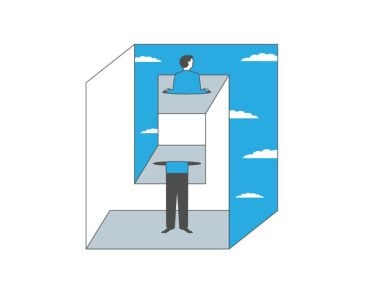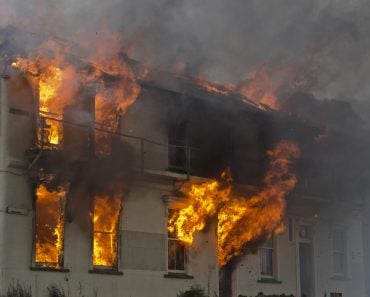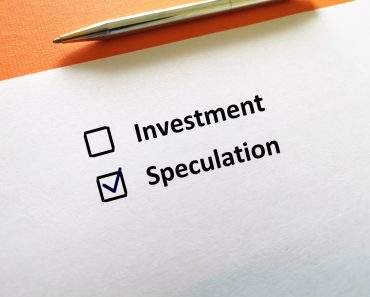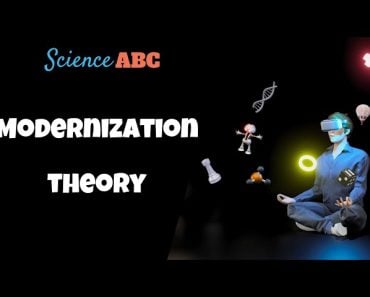Table of Contents (click to expand)
The Broken Window Fallacy is the belief that destruction can be good for the economy because it creates new business opportunities. This is a fallacy because it fails to take into account the opportunity cost of the destruction. The opportunity cost is the value of the next best alternative that is given up when a decision is made. In the case of the broken window, the opportunity cost is the value of the shoes that the baker would have bought if he had not had to pay for the new window.
Economics is a subject haunted by many fallacies. The most prevalent fallacies in the world today are the result of one of two central issues, or both: looking only at the immediate consequences, or looking at the consequences for only a particular group of people or entities.

One of the fallacies that is most persistent in the history of economics is the broken window fallacy.
Recommended Video for you:
What Is The Broken Window Fallacy?
Imagine this: A hooligan throws a stone at the window of a baker’s shop, breaking the glass. The furious baker stomps out, but the boy is gone. The crowd gathers and begins discussing the incident. After a while, someone from the crowd points out the bright side—the glazier will have some additional business because of this event. Honestly, “What would be the fate of all the glaziers if no one ever broke any windows?”
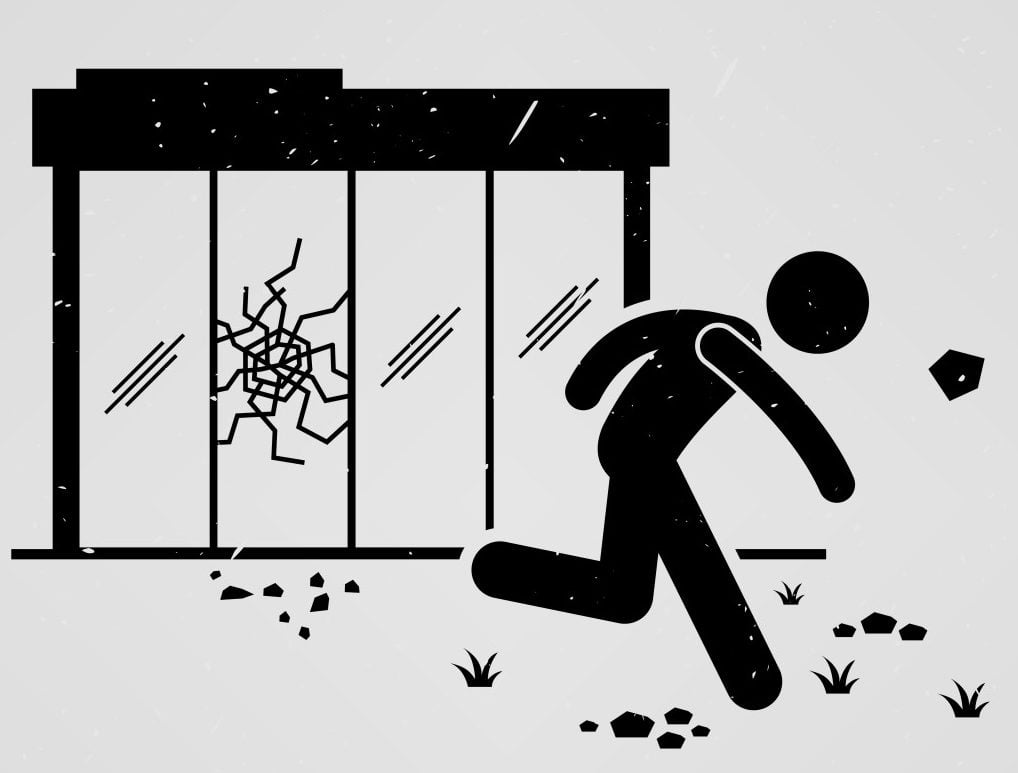
The glazier comes to the baker’s shop, replaces the glass pane, collects $50 from the baker and silently thanks the person who broke the glass. That little act of vandalism brought him business!
The glazier now has $50 to spend with other merchants, who will therefore have $50 more to spend with still other merchants and so on. The broken window will encourage ongoing trade of $50 and provide money and employment in ever-widening circles.
The fallacy lies in thinking that it is a good thing to break windows, since it encourages industry, in general, by causing money to circulate. The fallacy lies in concluding that destruction is good for the economy.
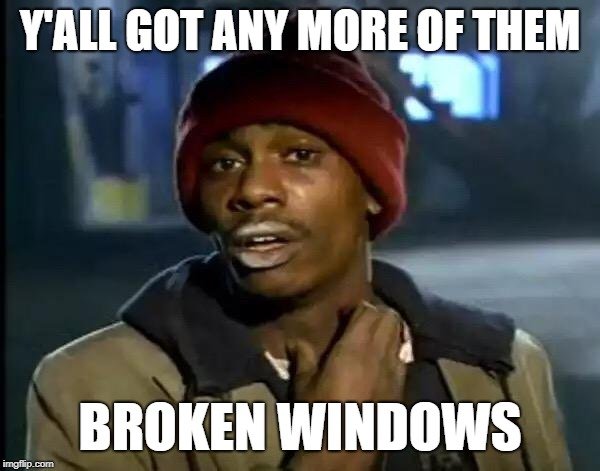
Why Is It A Fallacy?
Late French economist, Frederic Bastiat, criticizes the short-sightedness of the crowd and their ability to focus on only that which is seen. He urges to look at another possibility, that which is not seen. If the glass had not been broken, the baker would have spent that amount on something else, let’s say shoes, for example. This would have encouraged the shoemaker’s trade of $50. Thus, the glazier’s gain of business is merely the shoemaker’s loss of business.
Instead of having both—the window and the money—the baker now has only one of these. If he was planning to buy those shoes that very evening, he would have had both—the window and the shoes. Now, he must make peace with having the window, but no shoes.
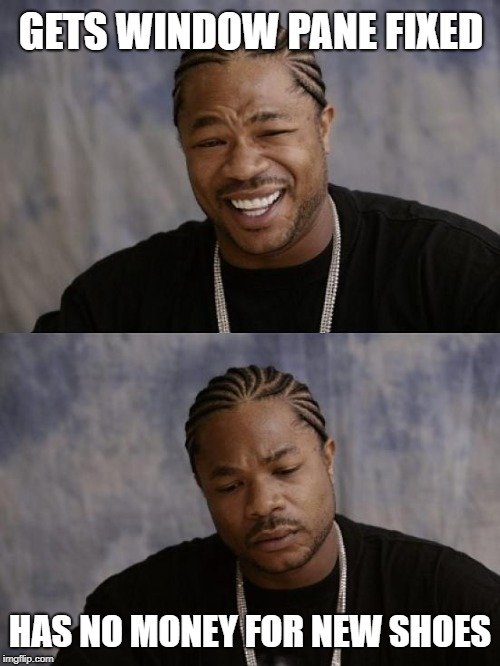
No new employment was added because of the broken window. The community as a whole is short one pair of shoes that might have otherwise come into being, so it is that much poorer instead.
The people in the crowd were thinking of only two seen parties in the transaction—the glazier and the baker. They missed the possibility of a potential third, unseen party—the shoemaker. They probably forgot this possibility because the shoemaker will not enter the scene. They will see the replaced window, but they won’t see the new pair of shoes because the shoes will not be bought. The crowd only sees what is immediately visible to the eye and misses that which remains unseen.
Broken Window Fallacy: Examples
You might think that one would be able to avoid getting trapped in the broken window fallacy after a few moments of thought, yet this fallacy is one of the most persistent fallacies, and wears a thousand disguises. Powerful and influential people of the world, chambers of commerce, labor union leaders, political leaders, journalists and even professors of economics in our best universities fall prey to this fallacy.
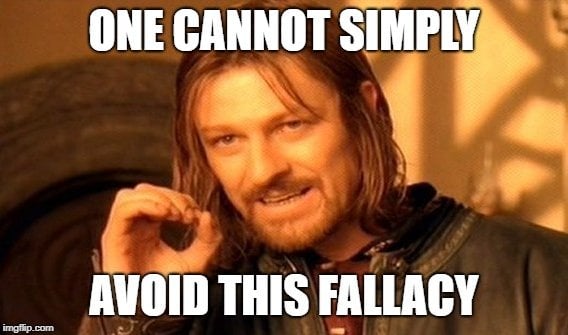
It manifests itself during calamities that destroy cities and wars that deplete the resources of entire nations. People look at how destruction makes way for production opportunities for a number of industries due to the accumulated demand for houses and infrastructure.
Another example of this fallacy is faith in government spending. Governments collect taxes from people for the purpose of providing employment, but this leaves a deficiency in private purchasing power.
Take the case of a bridge that is built only for the purpose of providing employment. Instead of thinking where the bridge must be built, the need for bridges must now be invented by asking where the bridges can be built. For every dollar that is spent on the bridge, a dollar is taken away from taxpayers. Thus, for every public job that is created, a private job is destroyed. For every bridge that is built, there are homes, cars, dresses and other items that remain unbuilt.
Destruction And Demand
Does destruction really increase demand? The advantages of destruction are stressed by great captains of industry, especially in times of war. The destruction caused by war, as stated above, demands the reconstruction of affected areas, which opens the door for enormous production and trade. These capitalists see the post-war world as being more prosperous than the pre-war world due to the business facilitated by destruction; any cities leveled to the ground will now have to be rebuilt.
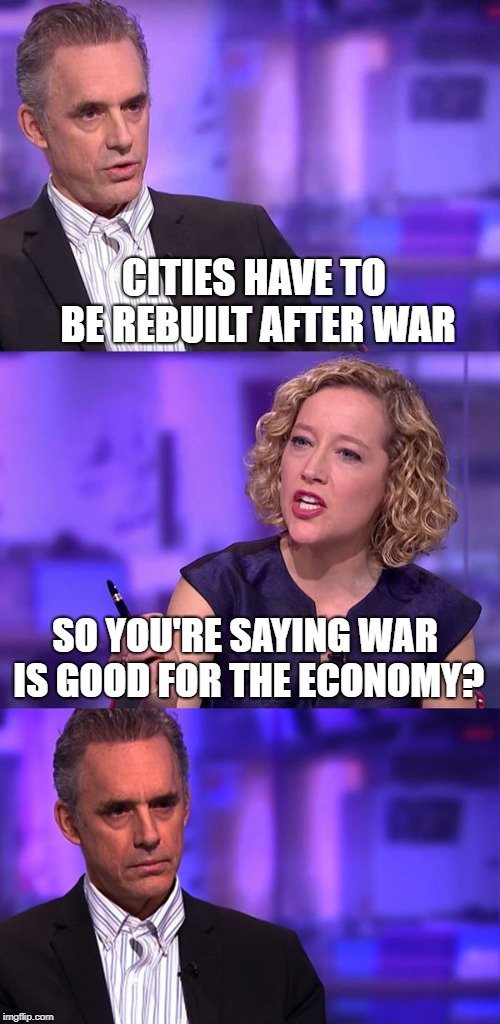
This is the broken window fallacy swelled beyond recognition. It confuses need with demand. The destructive aspects of war bring impoverishment, and thus, need. However, need and demand are two very different things. A need can be called a demand only when it is backed by sufficient purchasing power. The needs of developing nations are incomparably greater than the needs of developed nations, but there is less stimulation of new business due to a lack of purchasing power in those developing nations. It does not help the economy to have need in the absence of the means to convert it into demand.
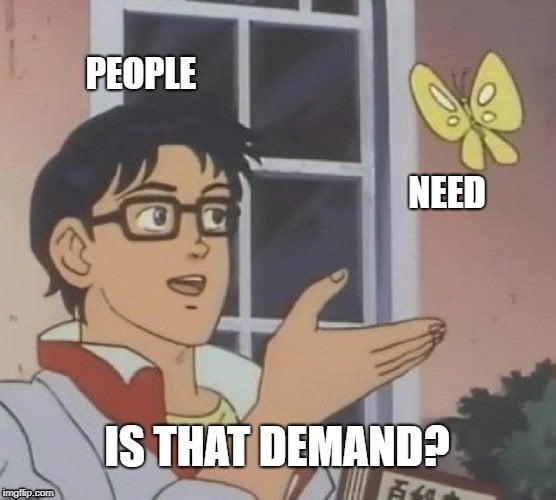
The fallacy of demand is a half-truth. The broken window did bring trade to the glazier. The destruction caused by war will create more business for the producers of certain things, such as the building and construction industries. This may seem like an increase in total demand to some people, but what is really taking place is the diversion of demand from other products to these particular products.
When bombed out houses are rebuilt, there is that much less manpower and other resources to produce anything else. People will buy houses because they must, but when they spend money on houses, they have that much less purchasing power for anything else. Thus, when business is increased in a particular area, it must correspondingly decrease in other areas.
Destruction only changes the direction of effort and therefore the balance and structure of industries. Once the accumulated need for houses and other durable goods has been satisfied, these temporarily favored industries will have to shrink again to allow other industries to cater to new needs.
Demand will not only be diverted after war, but will also shrink. How, you ask?
Demand And Supply
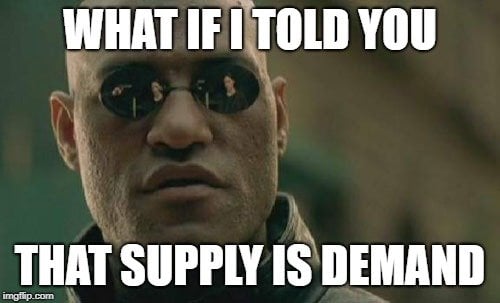
Post-war demand shrinks in comparison with pre-war demand because post-war supply will have shrunk. Demand and supply are two sides of the same coin. They are the same thing looked at from two different points of view. Supply creates demand because, essentially, it is demand. People supply things because they demand other things. A farmer supplies wheat and rice because of his demand for a car and other goods. People in the automobile industry supply motor cars because of their demand for food and other goods.
When we make the case of destruction extreme enough, it becomes obvious how a lack of resources causes a lack of production capacity, thereby shrinking supply, and hence, demand.

According to Bastiat, a bad economist confines himself only to the visible effect. A good economist, on the other hand, takes into account the effects of that which is seen and that which must be foreseen. To break, to spoil and to waste is not profitable; destruction is not good for the economy.
After all, if destruction actually did any real good, we would encourage kids to run around town breaking windows, and clearly, that isn’t the case!

